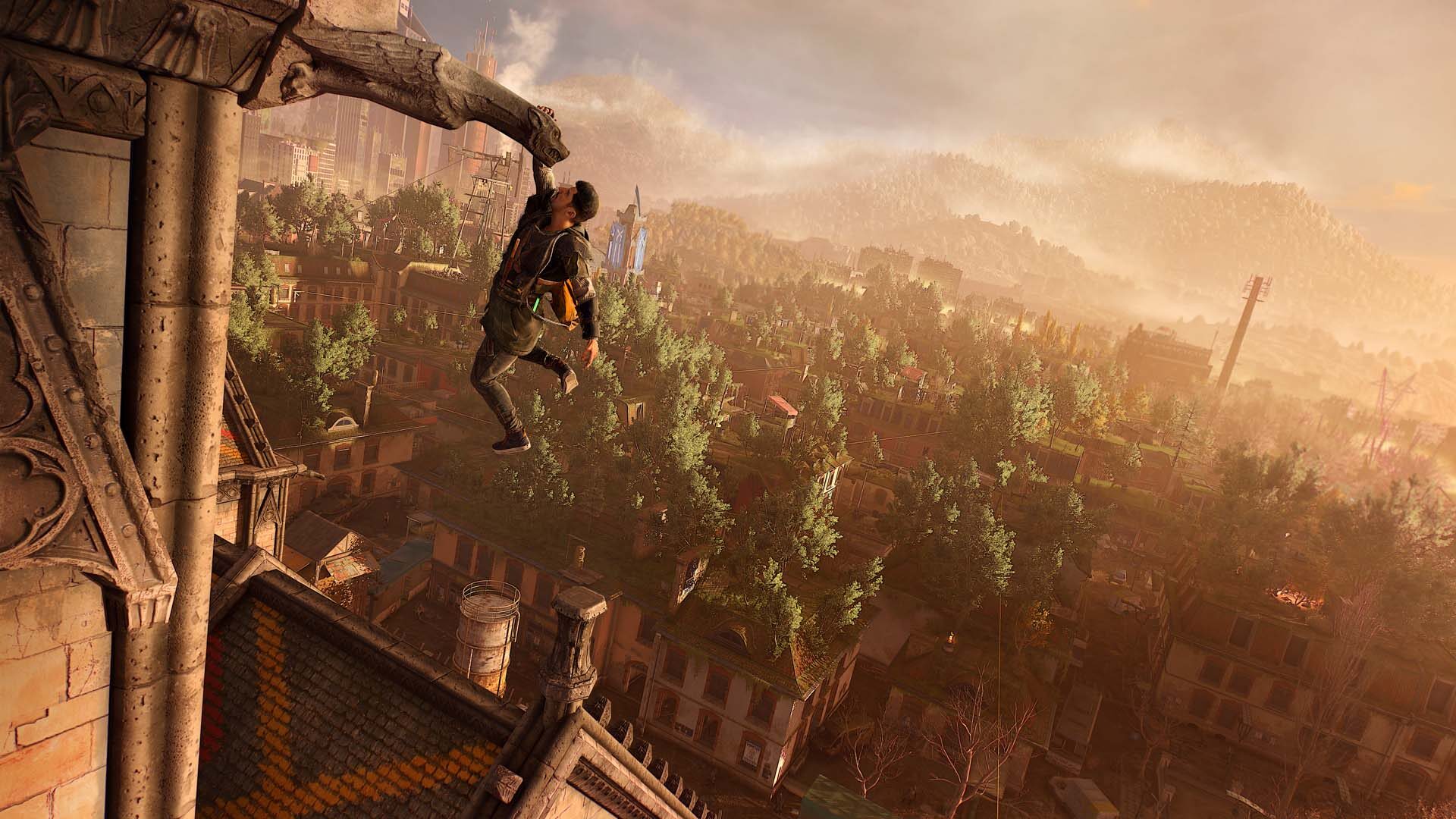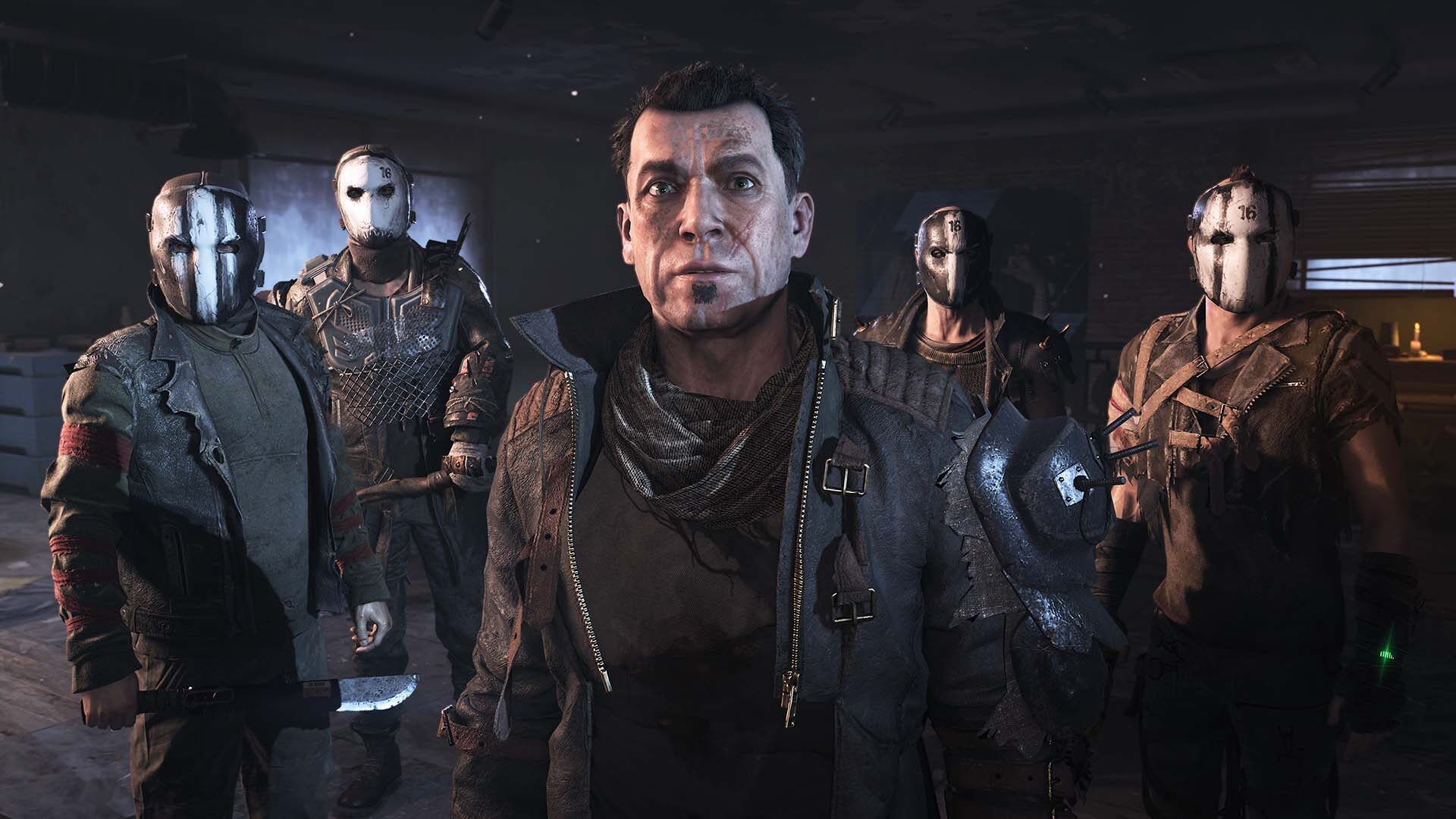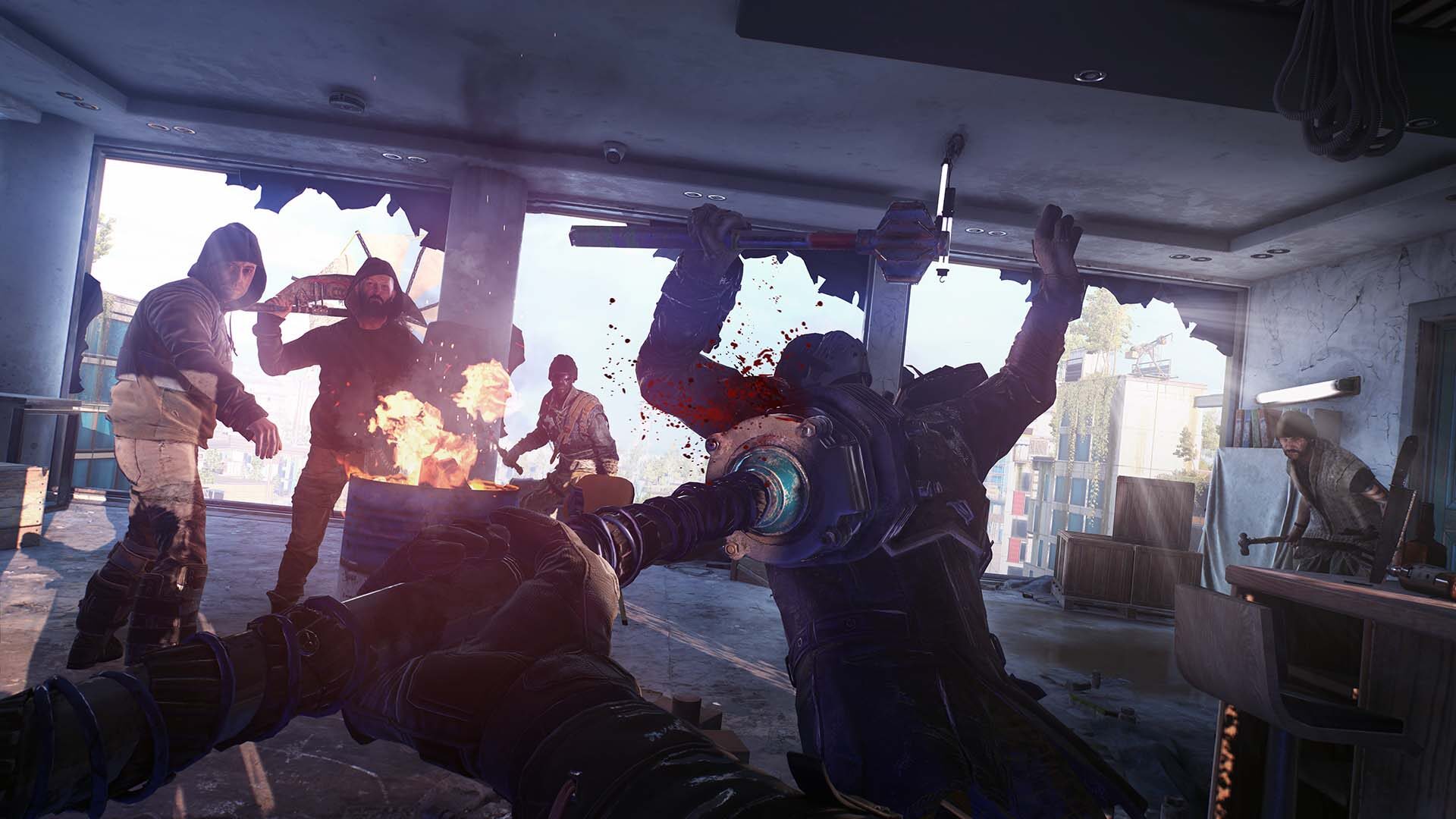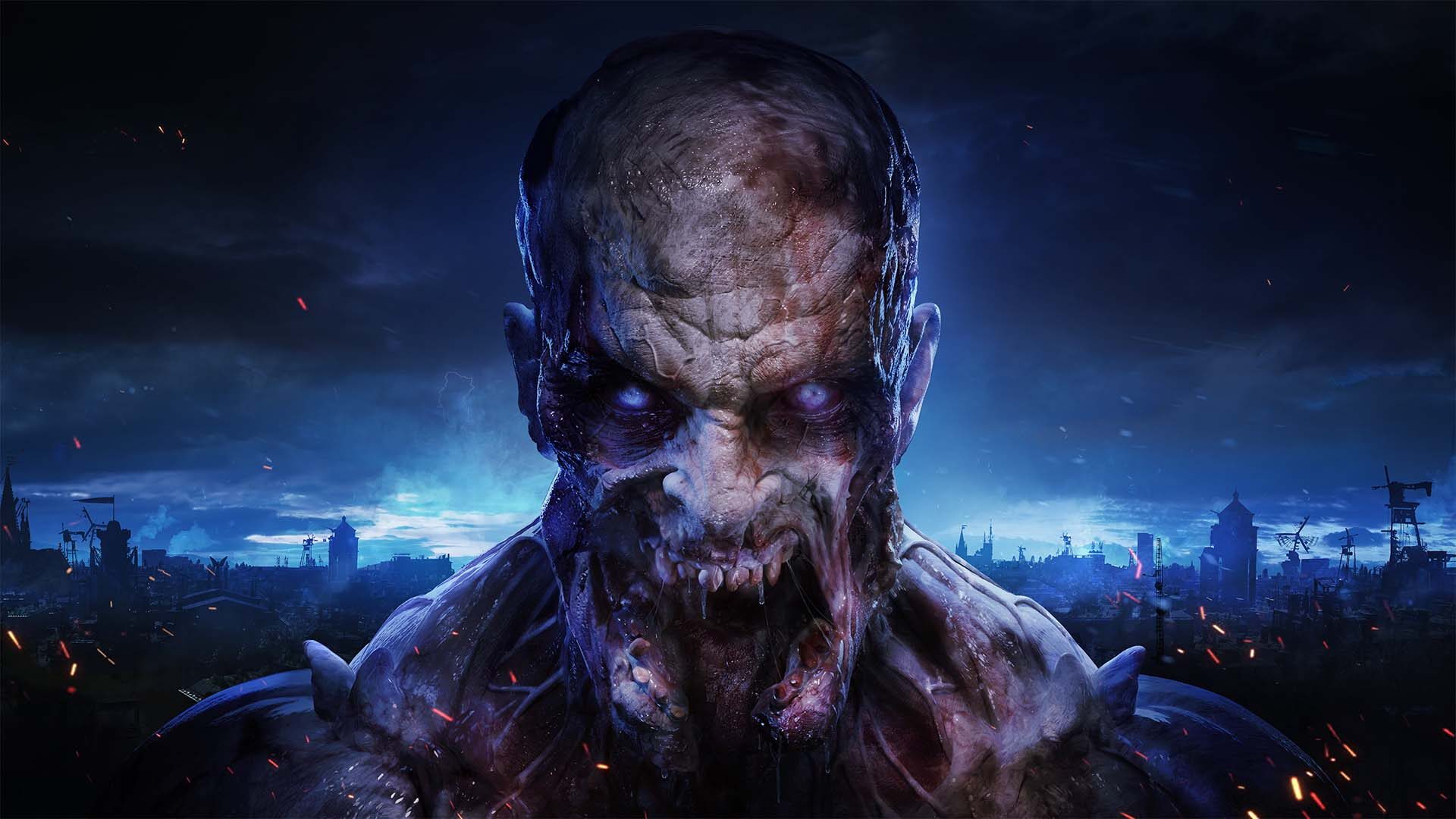Dying Light 2 Stay Human elicited involuntary, physical responses so often throughout my playthrough that I began to dread having to sit down and consume more. For someone with an intense visual height intolerance verging on acrophobia, Dying Light 2’s sense of scale was panic-inducing; I literally had to stop and take deep breaths between certain jumps. I’ve had games like Alien: Isolation and Silent Hill beat on my amygdala like it was a speed bag before, but never did it feel so personal. Even falling to my death many, many times and respawning like nothing had happened didn’t cure me of the fear of missing a jump. The most basic video game maneuver suddenly had new meaning.
To say that I enjoyed the anxiety-inducing moments of Dying Light 2 would be an overstatement, but I can at least appreciate the craft that went into making such an unpleasant, physical response possible. Dying Light 2’s parkour is great because it often feels like something I (well, not me personally, but someone in actual good shape) could do in real life, and it also feels like something I could die while doing in real life. I’m not going to Mario-style triple-jump around the city or swing on webs like Spidey, but I sure as hell could at least attempt some jumps the way they’re presented in Dying Light 2. Later, when you unlock a paraglider and a grappling hook, Dying Light 2’s parkour feels a little more videogamey, but the feeling of vertigo never went away, no matter how many tools I had to fight against gravity.
The first-person action in Dying Light 2 feels grounded and physical even with a paraglider that magically refolds itself whenever you’re done using it, but it also breaks from the confines of reality in more subtle ways to make sure it’s still fun. There are moments when, in real life, letting go of a rope at a certain angle would certainly result in falling into the gap you were most assuredly trying not to fall into, but Dying Light 2 massages your momentum just enough so that you can have slightly more control than you would expect.

Part of what makes Dying Light 2’s parkour so effective is its world design. Chances are, if you think you can climb up or jump onto something, you can. Uness it’s a tree; for some reason, you can’t climb trees at all. I guess that makes sense, as Dying Light 2’s approach to level design is to shave off the rough edges of the real world just enough to fit into the kind of modularity required to create a satisfying platformer. The game does guide you in some ways with the color yellow: yellow-painted ledges, yellow-painted signs, and so on. But that’s mostly in confined areas or when climbing the Far Cry–esque windmills.
And there are places in the city that feel, as John Wilson would put it in his How To episode about scaffolding, as if the buildings all shopped at the same store. Still, that doesn’t matter so much when hopping, skipping, and jumping around, as Dying Light 2 projects the parkour spirit of expressively, artistically turning urban modernity into a playground.
Ironically, where most open-world games feel inhibitive in how they force you to traverse their maps, Dying Light 2 feels freeing, even without an easily accessible fast travel. That you can level up your character’s parkour skills by simply engaging with the game’s movement mechanics, without having to complete specific challenges or jump through hoops, makes it all the more liberating.

Techland is its most artistic when portraying the feeling of parkour. The way the music subtly cuts out and cuts back in when taking off and landing a jump symbolizes that bass-drop feeling you get in your stomach when slightly lifting off from your seat in a car or a rollercoaster. But Dying Light 2 doesn’t really need to accomplish that symbolically; if you’re like me, you will feel it. But then there’s the other kind of physical reaction that I had to Dying Light 2, one that’s close to the anxiety I felt while jumping across rooftops but not quite as thrilling. It’s a feeling closer to revulsion at the grotesque nature of everything else that went into this game.
Sometimes, the revulsion is good, or if not “good” then at least intentional. This is a zombie game, after all, and the zombies are gross. Getting grabbed by a zombie, you can almost smell the rotting flesh and bloody gunk all over its skin. Even when doing the grabbing and putting the zombie in a headlock, the wispy, thinning hair on the back of its molting scalp and the gurgling sounds it makes while you’re trying to break its neck disgusted me. There’s a real misanthropy in the design of Dying Light 2’s zombies, a pure disgust at the human form in general.
But this misanthropy worms its way into many other aspects of Dying Light 2, most notably in its narrative. Taking place years after the original game’s events, the sequel takes place in a world where scientists have actually discovered a vaccine for the virus that turned Harran into a zombie-infested hellhole and basically saved the world. Everything was fine, I guess? Until it wasn’t, thanks to the “humanitarian” group, Global Relief Effort (GRE), which experimented with the virus to militarize it. The virus got out, yadda yadda yadda, and here we are. It’s all pretty standard zombie stuff, even in spite of the fact that Techland didn’t need any of this background to explain why a zombie outbreak in one city was not contained. Really, “solving” the zombie crisis and then starting it back up again makes the entire setup for the game narratively wobbly.
Techland posits the world of Dying Light 2’s city, Villedor, as taking place in the “modern dark ages,” but that’s not really accurate, as there’s no sense of religious belief or feudalism dominating the world. Moreso, Villedor is a nightmare city of tribalism where people beat each other to death with weapons made out of rusted scraps. Villedor’s citizens are divided up into different camps: Friendly factions include the hardscrabble Survivors and the militaristic Peacekeepers, while enemies include the cult-of-violence Renegades, random bandits, and zombies. It’s all very rote post-apocalyptic stuff, but it doesn’t make an effort to mine these tropes or do anything interesting with them whatsoever. Instead, it’s content with letting these two factions play the exact roles that you’d expect them to play within the game’s limp, choice-based narrative. It’s all the more disappointing considering that the original Dying Light was able to weave an intriguing tale of corporate espionage in a zombie setting without having to rely on the same character tropes we’ve seen time and time again in this kind of fiction.

As a Pilgrim (basically a post-apocalyptic mailman) named Aiden, you have a simple goal in mind from the outset of Dying Light 2’s story: travel to Villedor and find your sister, the aptly named Mia. In tracking down his sister by first finding a bad man named Waltz, Aiden gets sucked into the tense, barely antebellum politics of the city, and eventually ends up getting involved in a fight for the fate of the world. (I mean, not literally the world, but you get the idea.) Aiden, sticking his nose into everyone else’s business—including Rosario Dawson’s—in pursuit of Mia, has to make choices throughout the game that truly do impact the story and Villedor itself, but the only choices that really make sense for the character are the ones that would get him closer to his sister.
One of the driving philosophies behind Dying Light 2’s storytelling is that consequence matters. Anyone can die at any time, based on the decisions you make. But this only works if you actually care about the characters. Without spoiling too much, one particular reunion—like the one that drives the entire narrative—is so brief and so underwhelming, it’s almost like it was an afterthought. It doesn’t help that the dialogue is all written as if it’s supposed to sound badass and cool, but the phrasing is just awkward enough that it comes off as parody, like the writers were trying to make fun of what teenage boys would think is cool instead of actually trying to make the characters seem cool. One character refers to a woman who is maybe trying to kill him as a “vagina dentata.” That’s the level of subtlety we’re looking at here.
Meanwhile, all of the best story beats are buried in side quests, or they just disappear without seeing any kind of resolution. There’s a side quest that lets you decide to either save or kill a character that could ruin your cover and make you the city’s number-one fugitive. After deciding to save that character’s life, an action that would have assuredly derailed the rest of the game’s story, I experienced no consequences, no resolution, nothing. Sure, you might get to decide Villedor’s fate, but Dying Light 2 feels averse to real, character-driven drama. Instead, it fills your free time with looting and crafting, though no matter how much you loot, you never seem to have enough to craft.
The same can be said about the game’s gear system. I was constantly picking up gear, but I rarely ever felt compelled to change what my Aiden was wearing or using. Different classes of gear like the Bruiser or Ranger offered buffs for things like stamina and damage with one-handed weapons, but no choices I made felt overly meaningful. That being said, it also never seemed to inhibit what I wanted to do. It just felt like it was there in the most inoffensive, unobtrusive way possible—just another, basic video game thing. Another meaningless choice.

I do think that a consequence-driven narrative, where players have to live with their choices, is good in concept, but in practice I was left with a flat, empty feeling after the credits rolled. The only place where choice really seemed to impact my experience was when I had to choose between giving the Peacekeepers or Survivors access to safe zones like power plants and windmills. Depending on how many resources I gave to each side, certain new elements like trampolines, traps, or weapons would appear on the map in their occupied zones. But even then, these decisions made no narrative sense. Why was Aiden the purveyor of Villedor’s resources? What gave him the power, let alone the moral authority, to decide who received what?
Despite all of the emphasis on how my decisions as Aiden impacted the world, after getting what most people would consider the “bad ending,” I was still able to jump into Villedor and clean up some side quests in a way that should have been impossible. While it might have undermined the finality that Techland was going for, I wouldn’t have minded a New Game Plus option, so that I could run through the story again, making different decisions, without having to grind my character’s abilities.
Thematically, Techland is being obvious, as the Stay Human part of Dying Light 2 refers to one of the game’s neatest tricks. Pretty early on, Aiden gets infected with the Harran virus. Luckily for him, everyone in Villedor is also infected, and the only thing that keeps them from turning are UV lights. In order to “stay human,” players must manage a meter that, when in the dark, counts down to zombification. While I never actually did turn, there were a couple of moments where it came close, especially when exploring areas filled with chemicals that can expedite the process.
But “staying human” also quite obviously refers to the moral questions of what people do to stay alive. One of the characters asks Aiden if he’s ever killed anyone before, and Aiden grimly says that he’s done what he’s had to do to survive. Meanwhile, he just systematically decapitated and defenestrated a dozen or so Renegades without batting an eye. At this point in the medium’s lifetime, the conversation around violent acts in video games and “ludonarrative dissonance” feels like wheels spinning, and it’s developers like Techland who, by making games where violence is both the main gameplay mechanic and the main moral focal point, have gotten us stuck in the mud.
When it comes to Techland’s estimation of humanity and how it presents these ideas in a video game, Dying Light 2 is just another one that can’t possibly imagine a post-capitalist world where human beings don’t divide themselves into tribes, with one group cosplaying as refugees and another cosplaying as jackbooted fascists. In the minds of Dying Light 2’s writers, and the writers of countless other video games like it, you’re either a killer or a victim. Paired with the constant visual barrage of beating people to death in first person, Dying Light 2 has to be one of the most grotesque games I’ve experienced in a long time. Between the feelings of revulsion and the dizzying vertigo, Dying Light 2 wore me down.
And yet, despite the visceral aversion I feel towards the game, I still somehow had fun. Parkouring across the city, dashing through shadow-drenched rooms filled with zombies and leaping from windows into the safety of sunlight, Dying Light 2 provides flashes of a real sense of freedom. I could go where I wanted, how I wanted. When that’s the point, when Dying Light 2 lets you simply enjoy its liberating movement, the game feels more human. The problem is that it doesn’t stay that way.

Images: Techland
|
★★★☆☆
Dying Light 2 Stay Human’s enhanced parkour and intricate level design make for some of the most fun you can have moving through a video game world, and the hand-to-hand combat is simple but effective. Most impressive is the sense of scale and gravity that makes leaping between rooftops feel so death-defying. Unfortunately, its story wallows in post-apocalyptic clichés and misanthropy, and its choice-based narrative often drops its most interesting plot threads. |
Developer Techland Publisher Techland ESRB M - Mature Release Date 02.04.22 |
| Dying Light 2 Stay Human is available on Xbox Series X/S, PlayStation 5, Xbox One, PlayStation 4, and PC. Primary version played was for Xbox Series X. Product was provided by Techland for the benefit of this coverage. EGM reviews on a scale of one to five stars. | |

Michael Goroff has written and edited for EGM since 2017. You can follow him on Twitter @gogogoroff.